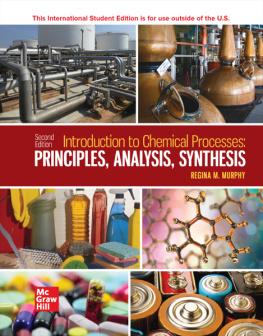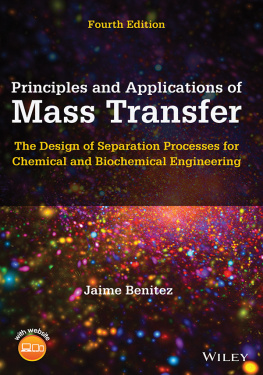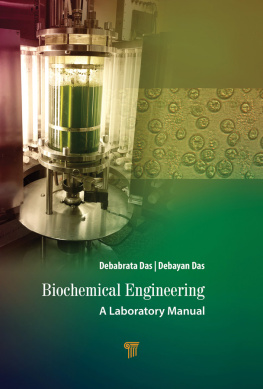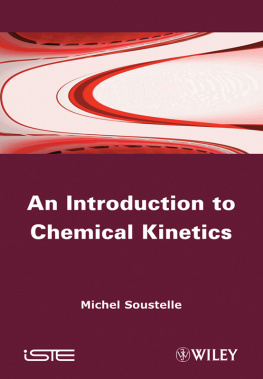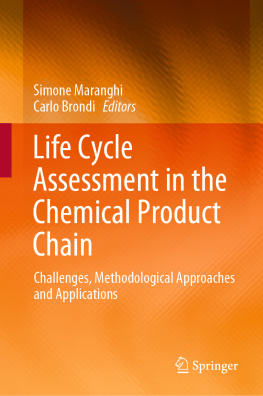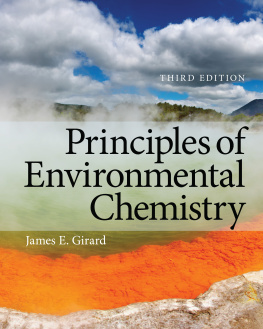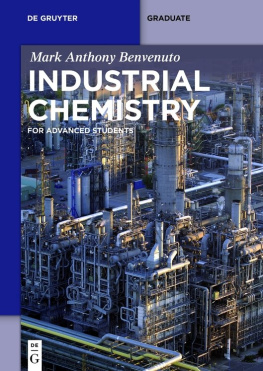
page i
Introduction to
Chemical Processes
Principles, Analysis, Synthesis
Second Edition
Regina M. Murphy
University of Wisconsin, Madison

page ii

INTRODUCTION TO CHEMICAL PROCESSES
Published by McGraw Hill LLC, 1325 Avenue of the Americas, New York, NY 10019. Copyright 2023 by McGraw Hill LLC. All rights reserved. Printed in the United States of America. No part of this publication may be reproduced or distributed in any form or by any means, or stored in a database
or retrieval system, without the prior written consent of McGraw Hill LLC, including, but not limited to, in any network or other electronic storage or transmission, or broadcast for distance learning.
Some ancillaries, including electronic and print components, may not be available to customers outside the United States.
This book is printed on acid-free paper.
1 2 3 4 5 6 7 8 9 LCR 27 26 25 24 23 22
ISBN 978-1-265-24299-2
MHID 1-265-24299-2
Cover Image: Jaime Pharr/Shutterstock, Kateryna Kon/Shutterstock, oatjo/Shutterstock, Comstock/PunchStock, Phongphan Phongphan/Alamy Stock Photo, Reed Richards/Alamy Stock Photo
All credits appearing on page or at the end of the book are considered to be an extension of the
copyright page.
The Internet addresses listed in the text were accurate at the time of publication. The inclusion of a
website does not indicate an endorsement by the authors or McGraw Hill LLC, and McGraw Hill LLC does not guarantee the accuracy of the information presented at these sites.
mheducation.com/highered
page iii
Dedication
To my wonderful family
Contents
page iv
page v
page vi
page vii
page viii
page ix
page x
page xi
page xii
page xiii
page xiv
page xv
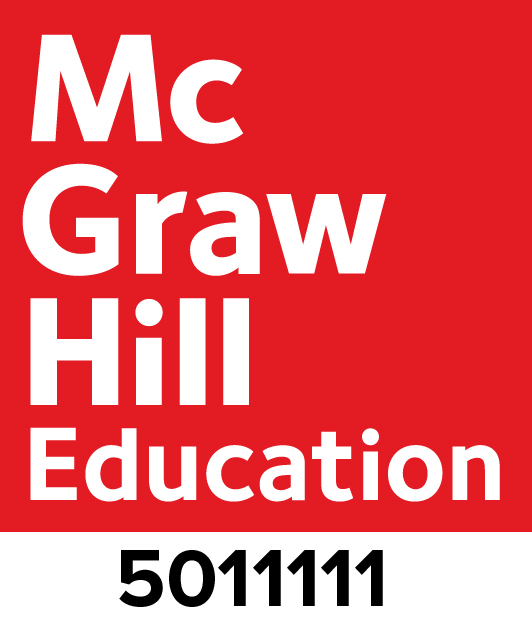
page xvi
Preface
Introduction to Chemical Processes: Principles, Analysis, Synthesis is intended for use in an introductory one-semester or two-quarter course for students in chemical engineering and related disciplines. The text assumes that the students have had one semester of college-level general chemistry and one or two semesters of college-level calculus. Although student understanding of the material will be deeper with greater background in linear algebra or organic chemistry, the text is organized so that this background is not required for successful completion.
Course Trends
Introductory chemical engineering courses traditionally focus on chemical process calculations. Material and energy balances are taught, a few concepts in thermodynamics are introduced and miscellaneous information on units, dimensions, and curve fitting are included. By the end of the semester most students, given a well-defined problem, can set up and solve material and energy balance equations, but they do not have a good understanding of how these calculations are related to actually designing chemical processes to make products.
Several years ago the chemical engineering faculty at UWMadison decided to redesign our introductory course. Our goals were twofold: (1) to give the students a better flavor of how chemical processes convert raw materials to useful products and (2) to provide the students with an appreciation for the ways in which chemical engineers make decisions and balance constraints to come up with new processes and products. At the end of the semester, we wanted students to be able, with a minimum amount of information, to synthesize a chemical process flowsheet that would approximate real industrial processes. This includes selection of appropriate separation technology, determination of reasonable operating conditions, optimization of key process variables, integration of energy needs, and calculation of material and energy flows. This becomes possible at the introductory level through use of limiting cases, idealizations, approximations, and heuristics. We also wished to integrate concepts in sustainable resource utilization, process safety, environmental protection, and economics at the earliest levels of engineering education, so that these principles become naturally embedded in a students problem-solving practices.
The modern approach equips students with the tools necessary for thinking about the creative strategies of chemical process synthesis and greatly enhances students understanding of the connection between the chemistry and the process . It provides the students a framework for much of the rest of the curriculum: Students are more motivated to struggle through the rigor and abstraction of engineering science courses in thermodynamics, transport, and kinetics, because the connection between fundamental concepts and practical engineering problem solving has been made. Senior process design courses revisit the same terrain but at a more sophisticated level. Students learn that the principles of chemical processes, and the strategies of process synthesis and analysis, can be advantageously applied to an enormous diversity of problems, from intracellular trafficking of a drug to accumulation of pollutants in the ecosystem. The ready availability of easy-to-use computational tools means that students in an introductory course can tackle challenging and complex problems.
page xvii
Organization
Many times, students decide to major in chemical engineering because they like chemistry and math, and are interested in practical applications. In designing this text, we have tried to keep this motivation in mind. We start right off the bat, in , providing a link to freshman chemistry courses. We show how simple stoichiometric concepts are used to make informed choices about raw materials and reaction pathways. Students should understand that engineering is not simply about doing calculations, but about using calculations wisely to make good choices. The idea of combining calculations, data and heuristics to make choices is a central theme throughout the text.
introduces the simple but powerful idea of process flow sheeting as the chemical engineers means to communicate ideas about raw materials, reaction chemistry, processing steps, and products. Here students learn the 10 Easy Steps for process flow calculations, and are introduced, in a very conceptual manner, to system variables, system and stream specifications, and material balances. Many example problems, drawn from a wide diversity of applications, are worked out in detail.
In we revisit material balance equations, reaction stoichiometry, and process flow sheeting, but with a more rigorous and mathematical approach. Throughout, the text retains this spiral organization, in which we first reinforce concepts introduced in earlier chapters, and then expand and deepen student understanding of these concepts. In this chapter, material balance equations are derived from conservation-of-mass principles, using a notation that students will see in more advanced classes, and we do not shy away from transient processes. Students learn degree-of-freedom analysis as an essential tool for organizing information, identifying constraints, and developing logical problem-solving strategies.
introduces key concepts in chemical reaction thermodynamics and chemical kinetics, and students learn how to integrate reaction thermodynamic or kinetic constraints with material balances to select reactor operating conditions for better performance.
Next page
